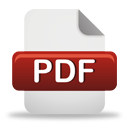

CLC number: TU528
On-line Access: 2024-08-27
Received: 2023-10-17
Revision Accepted: 2024-05-08
Crosschecked: 2018-11-10
Cited: 0
Clicked: 6341
Citations: Bibtex RefMan EndNote GB/T7714
Jin-tao Liu, Yang Yang, Chun-ping Gu, He-dong Li. Influence of dry heating regime on the mechanical and shrinkage properties of reactive powder concrete[J]. Journal of Zhejiang University Science A,in press.Frontiers of Information Technology & Electronic Engineering,in press.https://doi.org/10.1631/jzus.A1800394 @article{title="Influence of dry heating regime on the mechanical and shrinkage properties of reactive powder concrete", %0 Journal Article TY - JOUR
干热养护对活性粉末混凝土力学及收缩影响研究创新点:1. 通过调整不同养护工艺参数,大幅度提升活性粉末混凝土的早期强度; 2. 建立试验模型,成功模拟适应性冲压工艺过程. 方法:1. 通过实验分析,研究不同养护温度和养护时间对活性粉末混凝土力学强度的影响(表4); 2. 通过设计不同的养护湿度(50%和90%),构建后期养护环境与材料干燥收缩之间的关系,得到适应性的后期养护参数(表5); 3. 通过与已有研究的分析对比,提出适用于工程实际的高温干热养护工艺参数,并得出后期高湿度养护降低活性粉末混凝土收缩的微观机理(图7). 结论:1. 通过调整高温养护的温度和养护时间可以对活性粉末混凝土的强度产生影响. 2. 试件在经历高温养护后再进行高湿度养护可以有效降低材料的后期干燥收缩. 3. 材料界面过渡区在高温养护条件下变得更加密实; 在高温环境下生成托勃莫来石或硬硅钙石是材料获得较高强度的主要原因. 关键词组: Darkslateblue:Affiliate; Royal Blue:Author; Turquoise:Article
Reference[1]ACI (American Concrete Institute), 1997. Prediction of Creep, Shrinkage, and Temperature Effects in Concrete Structures, ACI 209R. ACI, USA.  [2]ASTM (American Society for Testing Materials International), 2006. Standard Test Method for Flexural Toughness and First-crack Strength of Fiber-reinforced Concrete (Using Beam with Third-point Loading), ASTM C1018. ASTM, West Conshohocken, USA.  [3]Aydın S, Yazıcı H, Baradan B, 2008. High temperature resistance of normal strength and autoclaved high strength mortars incorporated polypropylene and steel fibers. Construction and Building Materials, 22(4):504-512.  [4]Beglarigale A, Yalçınkaya Ç, Yiğiter H, et al., 2016. Flexural performance of SIFCON composites subjected to high temperature. Construction and Building Materials, 104: 99-108.  [5]Chen TF, Gao XJ, Ren M, 2018. Effects of autoclave curing and fly ash on mechanical properties of ultra-high performance concrete. Construction and Building Materials, 158:864-872.  [6]Cheyrezy M, Maret V, Frouin L, 1995. Microstructural analysis of RPC (reactive powder concrete). Cement and Concrete Research, 25(7):1491-1500.  [7]Cwirzen A, Penttala V, Vornanen C, 2008. Reactive powder based concretes: mechanical properties, durability and hybrid use with OPC. Cement and Concrete Research, 38(10):1217-1226.  [8]Felicetti R, Gambarova PG, Sora MPN, et al., 2000. Mechanical behaviour of HPC and UHPC in direct tension at high temperature and after cooling. Fifth RILEM Symposium on Fibre-Reinforced Concrete BEFIB, p.749-758.  [9]Garas VY, Kahn LF, Kurtis KE, 2009. Short-term tensile creep and shrinkage of ultra-high performance concrete. Cement and Concrete Composites, 31(3):147-152.  [10]Glasser FP, Hong SY, 2003. Thermal treatment of C–S–H gel at 1 bar H2O pressure up to 200 °C. Cement and Concrete Research, 33(2):271-279.  [11]Habel K, Charron JP, Denarié E, et al., 2006. Autogenous deformations and viscoelasticity of UHPFRC in structures. Part I: experimental results. Magazine of Concrete Research, 58(3):135-145.  [12]Helmi M, Hall MR, Stevens LA, et al., 2016. Effects of high-pressure/temperature curing on reactive powder concrete microstructure formation. Construction and Building Materials, 105:554-562.  [13]Hwang C, Young JF, 1984. Drying shrinkage of Portland cement pastes I. Microcracking during drying. Cement and Concrete Research, 14(4):585-594.  [14]Ishii T, Nishio H, Matsuyama T, et al., 2008. Manufacture and construction of a PC through girder type pedestrian bridge using ultra high strength fiber reinforced concrete. Proceedings of the 8th International Symposium on Utilization of High-strength and High-performance Concrete, p.27-29.  [15]ISO (International Organization for Standardization), 1989. Methods of Testing Cements–Determination of Strength, ISO 679:1989. ISO, Geneva, Switzerland.  [16]Juenger MCG, Jennings HM, 2002. Examining the relationship between the microstructure of calcium silicate hydrate and drying shrinkage of cement pastes. Cement and Concrete Research, 32(2):289-296.  [17]Lehmann C, Fontana P, Müller U, 2009. Evolution of phases and micro structure in hydrothermally cured ultra-high performance concrete (UHPC). In: Bittnar Z, Bartos PJM, Němeček J, et al. (Eds.), Nanotechnology in Construction 3. Springer, Berlin, Germany, p.287-293.  [18]Li HD, Xu SL, 2016. Rate dependence of ultra high toughness cementitious composite under direct tension. Journal of Zhejiang University-SCIENCE A (Applied Physics & Engineering), 17(1):417-426.  [19]Li WG, Huang ZY, Hu GQ, et al., 2017. Early-age shrinkage development of ultra-high-performance concrete under heat curing treatment. Construction and Building Materials, 131:767-774.  [20]Luke K, 2004. Phase studies of pozzolanic stabilized calcium silicate hydrates at 180 °C. Cement and Concrete Research, 34(9):1725-1732.  [21]Massidda L, Sanna U, Cocco E, et al., 2001. High pressure steam curing of reactive-powder mortars. Special Publication, 200:447-464.  [22]Mostofinejad D, Nikoo MR, Hosseini SA, 2016. Determination of optimized mix design and curing conditions of reactive powder concrete (RPC). Construction and Building Materials, 123:754-767.  [23]Park JS, Kim YJ, Cho JR, et al., 2015. Early-age strength of ultra-high performance concrete in various curing conditions. Materials, 8(8):5537-5553.  [24]Parrott LJ, 1977. Recoverable and irrecoverable deformation of heat-cured cement paste. Magazine of Concrete Research, 29(98):26-30.  [25]Peng GF, Kang YR, Huang YZ, et al., 2012. Experimental research on fire resistance of reactive powder concrete. Advances in Materials Science and Engineering, 2012: 860303. https://dx.doi.org/10.1155/2012/860303  [26]Prem PR, Ramachandra MA, Bharatkumar BH, 2015. Influence of curing regime and steel fibres on the mechanical properties of UHPC. Magazine of Concrete Research, 67(18):988-1002.  [27]Reda MM, Shrive NG, Gillott JE, 1999. Microstructural investigation of innovative UHPC. Cement and Concrete Research, 29(3):323-329.  [28]Richard P, 1994. Reactive powder concretes with high ductility and 200-800 MPa compressive strength. ACI Spring Conversion, 114:507-517.  [29]Schachinger I, Hilbig H, Stengel T, 2008. Effect of curing temperature at an early age on the long-term strength development of UHPC. 2nd International Symposium on Ultra High Performance Concrete, p.205-213.  [30]Shaheen E, Shrive N, 2006. Optimization of mechanical properties and durability of reactive powder concrete. Materials Journal, 103(6):444-451.  [31]Shen PL, Lu LN, He YJ, et al., 2018. Experimental investigation on the autogenous shrinkage of steam cured ultra-high performance concrete. Construction and Building Materials, 162:512-522.  [32]Shi C, Wu ZM, Xiao JF, et al., 2015. A review on ultra high performance concrete: Part I. Raw materials and mixture design. Construction and Building Materials, 101:741-751.  [33]Soliman AM, Nehdi ML, 2011. Effect of drying conditions on autogenous shrinkage in ultra-high performance concrete at early-age. Materials and Structures, 44(5):879-899.  [34]Tai YS, Pan HH, Kung YN, 2011. Mechanical properties of steel fiber reinforced reactive powder concrete following exposure to high temperature reaching 800 °C. Nuclear Engineering and Design, 241(7):2416-2424.  [35]Tam CM, Tam VWY, 2013. Microstructural behaviour of reactive powder concrete under different heating regimes. Magazine of Concrete Research, 64(3):259-267.  [36]Tam CM, Tam VWY, Ng KM, 2010. Optimal conditions for producing reactive powder concrete. Magazine of Concrete Research, 62(10):701-716.  [37]Tam CM, Tam VWY, Ng KM, 2012. Assessing drying shrinkage and water permeability of reactive powder concrete produced in Hong Kong. Construction and Building Materials, 26(1):79-89.  [38]Teichmann T, Schmidt M, 2004. Influence of the packing density of fine particles on structure, strength and durability of UHPC. First International Symposium on Ultra High Performance Concrete, p.313-323.  [39]Tennis PD, Jennings HM, 2000. A model for two types of calcium silicate hydrate in the microstructure of Portland cement pastes. Cement and Concrete Research, 30(6):855-863.  [40]Thomas JJ, Jennings HM, 2010. Effect of heat treatment on the pore structure and drying shrinkage behavior of hydrated cement paste. Journal of the American Ceramic Society, 85(9):2293-2298.  [41]Vandamme M, Ulm FJ, Fonollosa P, 2010. Nanogranular packing of C–S–H at substochiometric conditions. Cement and Concrete Research, 40(1):14-26.  [42]Wang DH, Shi CJ, Wu ZM, et al., 2015. A review on ultra high performance concrete: Part II. Hydration, microstructure and properties. Construction and Building Materials, 96: 368-377.  [43]Yalçınkaya Ç, Yazıcı H, 2017. Effects of ambient temperature and relative humidity on early-age shrinkage of UHPC with high-volume mineral admixtures. Construction and Building Materials, 144:252-259.  [44]Yanni G, Youssef V, 2009. Multi-scale Investigation of Tensile Creep of Ultra-high Performance Concrete for Bridge Applications. PhD Thesis, Georgia Institute of Technology, Georgia, USA.  [45]Yazıcı H, Yardımcı MY, Yiğiter H, et al., 2010. Mechanical properties of reactive powder concrete containing high volumes of ground granulated blast furnace slag. Cement and Concrete Composites, 32(8):639-648.  [46]Yoo DY, Park JJ, Kim SW, et al., 2013. Early age setting, shrinkage and tensile characteristics of ultra high performance fiber reinforced concrete. Construction and Building Materials, 41:427-438.  [47]Zdeb T, 2017. An analysis of the steam curing and autoclaving process parameters for reactive powder concretes. Construction and Building Materials, 131:758-766.  [48]Zheng WZ, Li HY, Wang Y, 2012. Compressive behaviour of hybrid fiber-reinforced reactive powder concrete after high temperature. Materials & Design, 41:403-409.  Journal of Zhejiang University-SCIENCE, 38 Zheda Road, Hangzhou
310027, China
Tel: +86-571-87952783; E-mail: cjzhang@zju.edu.cn Copyright © 2000 - 2025 Journal of Zhejiang University-SCIENCE | ||||||||||||||


 ORCID:
ORCID:
Open peer comments: Debate/Discuss/Question/Opinion
<1>